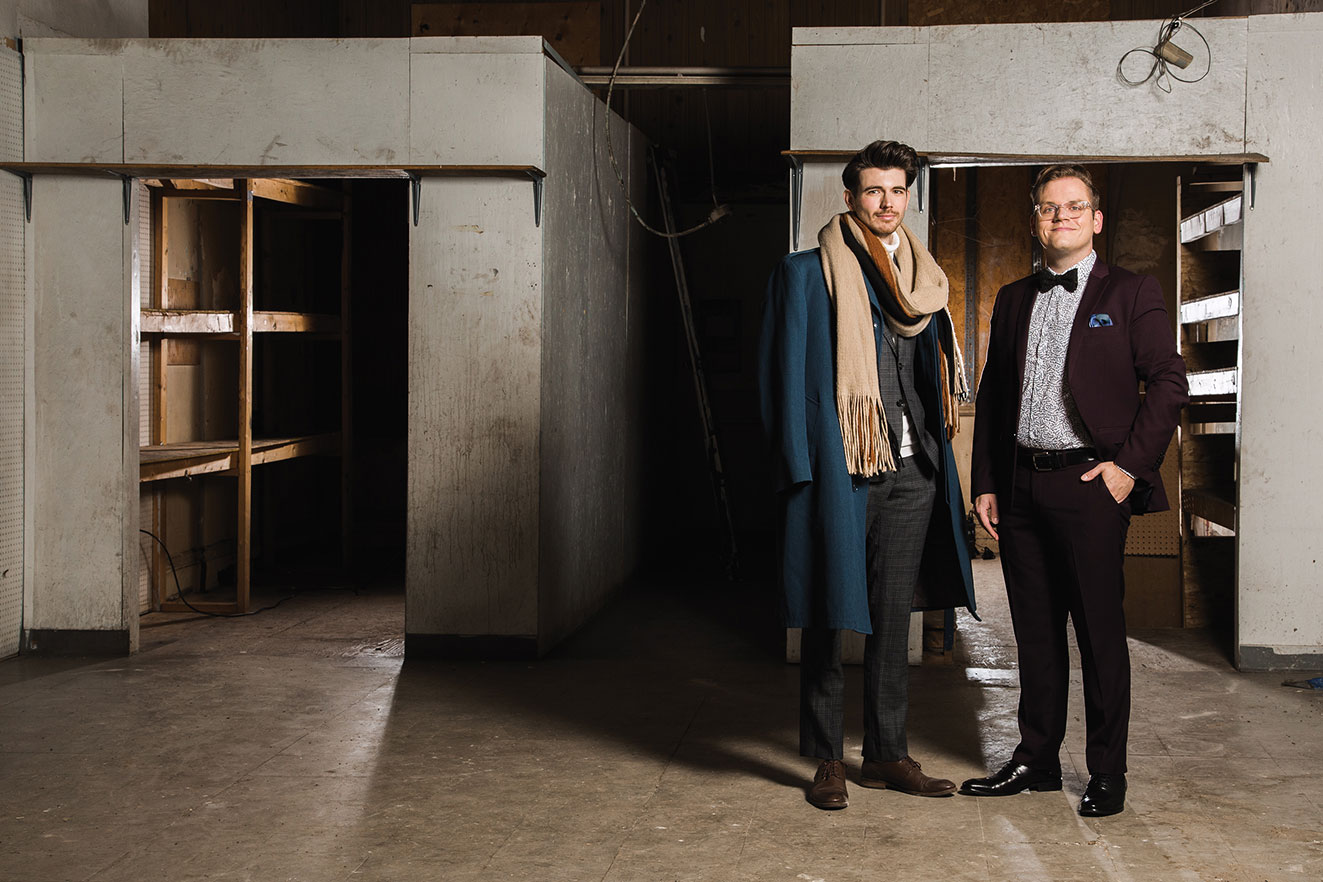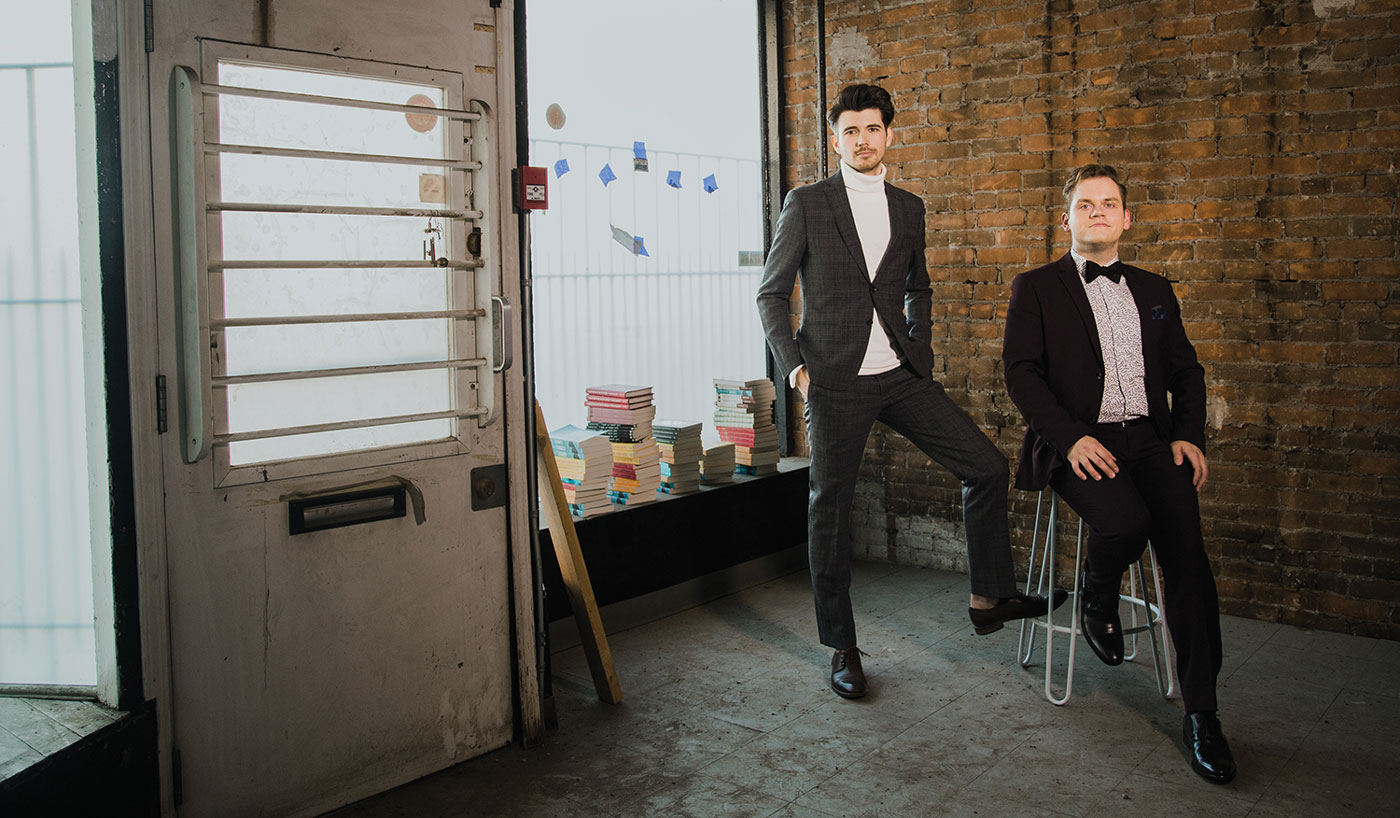
By 2016, Edmonton had just one independent bookstore left. Steve Budnarchuk, who co-owns that store, Audreys Books, with his wife Sharon, says the industry experienced a slow near-extinction over 20 years. Part of it was our relationship to books themselves. “The previous generation, you could walk into their homes and there wasn’t an artifact in the place — no CDs, no DVDs, no books,” he says. “They weren’t buying.”
There was more to it than that, of course. Online retailer Amazon arrived in 1995 and undercut on price and nailed convenience. That was a slow burner — consumers weren’t quick to buy things online. Still, between 1995 and 2000, the number of independent bookstores in the United States contracted by nearly half, according to the American Booksellers Association. Canada trails American bookstore trends, Budnarchuk says. Still, the broad strokes were true here, too: Amazon was Goliath and there were many unsuccessful Davids.
Next came e-books (remember those?), which hacked into profits for independents.
Then, in the late 1990s, came the large-format chain bookstores like Chapters and Indigo. These “carpet bombed” Alberta, Budnarchuk says. The retailers opened 20 locations across the province, with eight in Edmonton alone. Greenwoods’ Bookshoppe, located on Whyte Avenue since 1979, succumbed in 2012. Budnarchuk says that to remain viable, the store made an effort to utilize all it services, including its government, corporate and schoolbook businesses.
Yet Amazon was only getting started. In the 2000s, the online retail space grew in popularity by offering intense discounts, including to book buyers. By 2011, book giant Borders fell, bankrupt. By 2018, Amazon’s rise had forced British book institution Barnes & Noble to seek a hedge-fund bailout. “It was a big hit,” Budnarchuk says. “As [Amazon] grew, our sales did shrink, no question. They drove the nail into the coffin of independent bookstores across the country more than anything.”

But then, poof. Consumers shifted.
Today, the once blighted independent bookstore world is rewilding. Independents are back. That’s because readers of physical books are back. “Young readers are buying again,” Budnarchuk says. “Maybe it has to do with the revenge of analogue.” Sales are up in North America, too. Hardcover and paperback sales volumes have increased, if by small margins, all while e-book sales shrink.
In the U.S., starting in 2009, indie bookstores rebounded, adding 35 per cent more shops to their ranks by 2015. Today, here in Canada, three in four independent booksellers say their business is healthy and 63 per cent of them view the Canadian publishing industry as strong, according to a report by BookNet Canada. In a world where Amazon Prime will sell you diapers, furniture or novels with the same creepy efficiency, an independent shop seems like a disruptive retail concept. The formula is so enticing that Barnes & Noble’s new CEO, James Daunt — who once owned his own bookshop 30 years ago — told Quartz the only future in a world where Amazon sells books is for chain bookstores like his struggling business to emulate independents.
Or to be more like Audreys.
Fittingly, in the last three years, Edmonton has tripled its independent bookstore count to, well, three. What does it mean for the future?
The first bookstore newcomer in Edmonton, Blue Lamp Books, arrived in 2016 — though if you haven’t seen it that’s somewhat understandable. Blue Lamp is hidden away in a second-floor, about 600-square-foot shop on Whyte Avenue. There, owner Kristy Rumsey has curated a collection of new and used titles in the mystery and detective genres, as well as true crime. The space is four small rooms with soft lighting, inviting seats to read on, and Rumsey, a superfan of what’s on the shelves.
“My client base has been steadily growing over the past three years to a point where I have a considerable number of guests that I enjoy seeing regularly,” Rumsey says. “The fact you can physically see and touch and smell the products in a shop is very important to the buying experience. I know it’s all the rage to say that collections are ‘curated’ these days, but I really feel this is a perfect description of what indie and smaller bookshops actually do.”
Rumsey attributes some of Blue Lamp’s staying power to the age-old idea of taste making. There’s a growing fog of choice in books on Amazon, she says; her customers pay for her taste to sort through it. “I don’t try to be everything to everyone.” The second arrival is Glass Bookshop. Creators Matthew Stepanic and Jason Purcell, both Edmonton writers, are zeroing in on the three Cs of modern independent bookstores — community, curation and convening. These have been laid out by Harvard Business School researcher Ryan Raffaelli, who has charted comebacks in once decimated traditionalists industries, like the Swiss watch industry’s comeback after the arrival of digital watches.
Community is knitted into the Glass Bookshop business model, given Stepanic and Purcell have raised more than $30,000 through an Indiegogo campaign. The curation is also a given, as Stepanic says he has always seen himself as a tastemaker. And, even before October 1, when Glass Bookshop opened in its first, temporary, physical form in City Centre Mall, the two were doing the convening, too. In the past, both have been involved in helping writers find their feet in the city or with literary festivals. Then, this past spring, they stepped this up by bringing in author Vivek Shreya, a former Edmontonian, for a book launch. Stepanic says they surprised the art gallery owner who hosted it all with the large number of people who came. “Edmonton turns out for things,” he says.
Glass is not in the same bookselling space as wherever you picked up your last John Grisham thriller or For Dummies variant. Stepanic describes it as a store that runs somewhat counter to Canada’s publishing status quo. There, he says, straight white men are “performing the same narratives over and over again.” Both he and Purcell identify as queer and both see Glass as a place to re-imagine books and bookstores. At Glass, LGBTQ2+ and BIPOC authors are centred. Eventually the plan is to offer a place to convene with an attached wine bar. A permanent location is in the works in the Stovel Block, near the Royal Alberta Museum, in 2020.
Still, Glass is set to open just as an Edmonton bookstore stalwart, Chapters on Whyte and 105th Street, is set to close. I raise this as a counterpoint. Purcell, who once worked at this very Chapters, is not impressed.
He says, look at the numbers. Indie bookshops are doing well. “What independents offer are all the things a chain bookshop cannot.”
“I think we writers and others in the industry get stuck in this declining narrative,” Stepanic adds. “Really, a lot of the evidence shows books aren’t going away.”
The truth, they say, is that Edmonton has a much larger literary scene than an outsider might expect, but it’s still somewhat off the snobby literary map. They think this gives Glass Bookshop the chance to be something central and unique for an underserved but growing market. “That affords us a lot of things,” Purcell says. “We have so many opportunities before us and what our ideas of community looks like here. [Glass Bookshop] is about thinking differently to sustain art.”
The Budnarchucks have owned and operated Audreys Books (no possessive — Audreys is named after two women named Audrey who were married to former owners) since 1988. A retirement party for the two was held over the summer; but, while Sharon is “mostly retired,” Steve still works in the store as he prepares “it for the renewal it will go through with my daughter Kelly and a team of passionate younger people running the store.”
There was a six-year period when the business boomed and Audreys was “reasonably profitable,” Steve Budnarchuk says. Since then, or 25 years in total, Audreys has not made profits so much as find ways to break even. Today, he says the store — which has been at Jasper Avenue and 107th Street since the late 1970s — still breaks even but at least sees revenues growing.
At the worst of times, toys and greeting cards supplemented Audreys sales. Today, Budnarchuk says, Audreys children’s-book section is bigger than ever, even bigger than its pre-Chapters and pre-Amazon size. He also sees hope in the growth of selling books to schools.
The saturation of large-format bookstores has not left a lot of room for independents, he says. But forces like Amazon have drawn a distinct line, which the big-box stores are on the wrong side of. They can’t compete on connection with their communities.
What, then, does Budnarchuk see for the future of independent bookstores in Edmonton? “Maybe that it’s not that independents are necessarily going to grow and thrive into the near future, but we have to survive,” he says. “There has to be an alternative here.”
This article appears in the December 2019 issue of Avenue Edmonton








